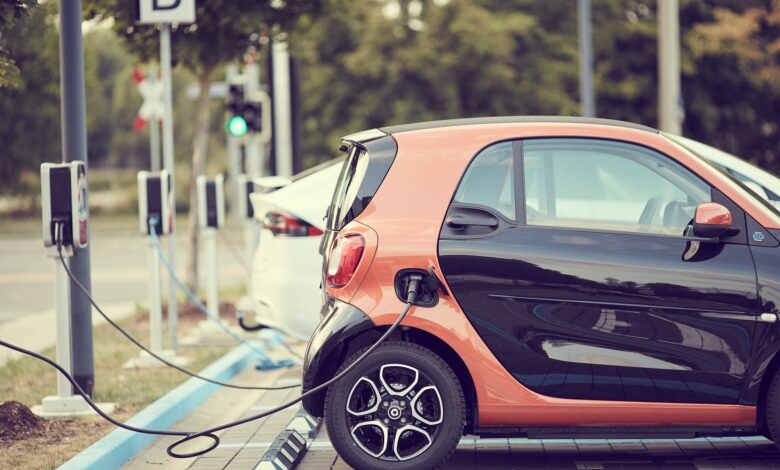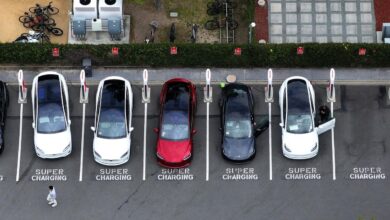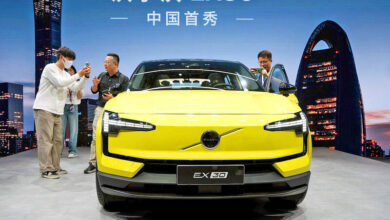Swappable batteries could be the way to revive flagging sales

× close
The rate of adoption of electric vehicles (EVs) in western countries continues to wane. In the UK, EVs’ market share of all new cars for 2024 will barely hit 20%, somewhat below the government goal of 22%. New car registrations of hybrid cars have grown at almost double the rate of battery EVs in the first four months of the year.
In a far cry from a year or two ago, the same has been happening in other countries. Hybrid market share across Europe has risen from about 25% to 30% in the past year, while battery EVs are down from about 18% to 13%. This has encouraged automakers like Ford to switch from prioritizing battery EVs to hybrids.
It’s now looking increasingly difficult for governments to meet their targets for zero-emission vehicles. The UK, for instance, is aiming for 80% of all new car sales to be zero emissions by 2030 and 100% by 2035.
Surveys suggest that the slowdown has a lot to do with the high cost of new EVs and the lack of charging infrastructure. In my view, the answer is to reinvigorate an earlier model for powering green cars, namely swapping batteries at dedicated stations.
The model has had a checkered history, but is thriving in some places. Notably, India has created a huge market for (autorickshaws) with swappable batteries, thanks to government subsidies. These vehicles’ share of new sales within the category rose from 5% in March 2023 to 25% in March 2024.
EV charging infrastructure, while still growing, is a bottleneck for adoption. In the UK, for instance, most chargers being installed are slow ones.
Tesla, whose “supercharger” network is one of the world’s largest and supports various manufacturers’ vehicles, recently fired the entire division overseeing buildout. The network will now be rolled out more slowly, undermining US government plans for the national charging infrastructure.
It takes a long time to charge EVs. Even using a fast charger, a full charge can require well over an hour. A charging station is occupied for that time, so other cars must queue or go elsewhere.
In contrast, battery swaps take just a few minutes, requiring far fewer stations for the same number of EVs. Sure, swapping stations may cost about twice as much to install as they need to charge batteries and store spares. But if they could be added into the mix, you would require fewer charging stations overall.
The average electric car in the UK costs £48,000, with cheaper models averaging around £26,000. High interest rates for car loans make them even less affordable.
A big part of the cost is the battery. Batteries have been getting cheaper over the years, but still account for nearly one third of purchase prices. Slow charging speeds and consumers’ “range anxiety”—concerns that EVs don’t go far enough on a single charge—have both created a need for bigger batteries. These use up more critical minerals like cobalt and nickel, raising the potential for supply problems in future.
With swappable batteries, the battery can be leased separately. The vehicle purchase price becomes much lower (with battery not included), while the battery effectively becomes pay-as-you-go. The speed of recharging makes this model particularly attractive to commercial drivers like taxis or small delivery vehicles—which helps to explain India’s tuk tuk success.
More generally, swapping should reduce drivers’ range anxiety and encourage manufacturers to make cars with lighter batteries. The difference in battery weight could be as much as two-thirds, making vehicles more efficient and causing less damage to roads and tires. Smaller batteries can also use alternative materials like LFP (lithium-iron-phosphate)—indeed, some entry-level cars do already. Unlike the other kinds of lithium-ions in most EVs today, these batteries don’t use nickel and cobalt.
Battery swapping 2.0
Battery swapping was supposed to take off in the late 2000s, when US start-up Better Place raised some US$850 million (£671 million) to build a global network. It partnered with Renault to create the Fluence ZE, an EV with swappable batteries.
However, Better Place filed for bankruptcy in 2013, having built swapping stations too aggressively and failed to get other manufacturers onboard. Tesla also initially experimented with swapping before focusing on its supercharger network.
What was missing in these failed efforts was the government. Automakers must be persuaded to commit to a swappable battery standard, while governments must be convinced that their subsidies will enable both a standard and the necessary infrastructure.
More recently, we’ve seen this in India and also China, where luxury EV player Nio is creating a battery-swapping network. A battery standard is slowly emerging, involving bigger rivals like GAC, Chang’an and Volvo-owner Geely (though not market leader BYD Auto). Nio is steadily expanding the network in China and also the EU, with plans to expand to North America in 2025.
Most western automakers currently don’t make cars with swappable batteries, perhaps because the requirements would constrain their designs. Their fixed-battery cars compete over specifications like battery capacity, configuration and efficiency. The requirement to swap regularly with other manufacturers’ batteries could undermine their advertising.
Many also won’t be keen to cover the outlay for swapping infrastructure: in the US, for instance, it has already taken US$5 billion of government funding to encourage the auto industry to start developing a charging infrastructure.
Nonetheless, battery-swapping is being pioneered in the US by third-party companies like Ample. Encouragingly, Ample has signed up Vauxhall and Peugeot owner Stellantis.
Governments in the US and elsewhere should encourage automakers to build swappability into some of their EV models in exchange for subsidized swapping infrastructure. Governments would have to shift some subsidies from charging networks, but it would be worth it. To reach tomorrow’s EV targets, acknowledging the limitations of today’s achievements is a vital next step.



